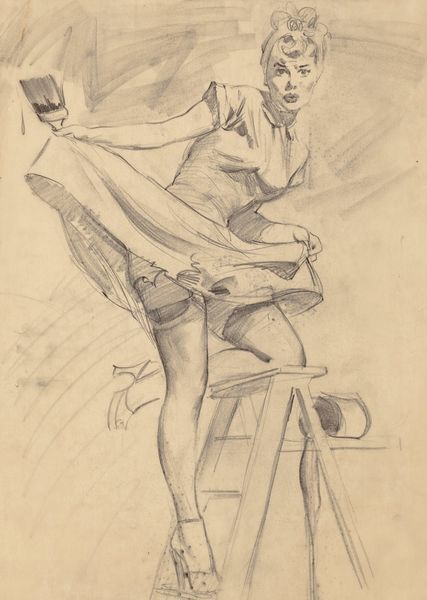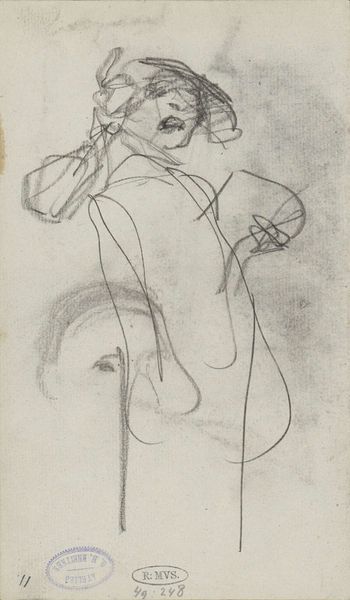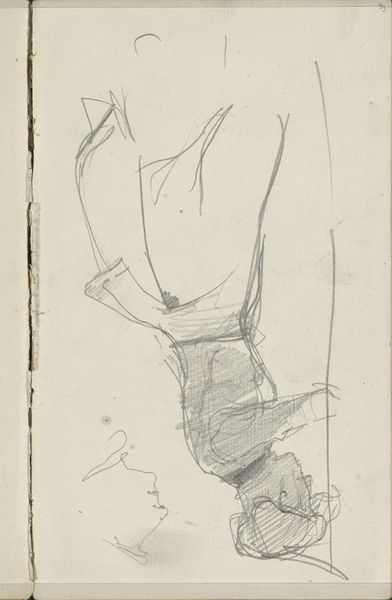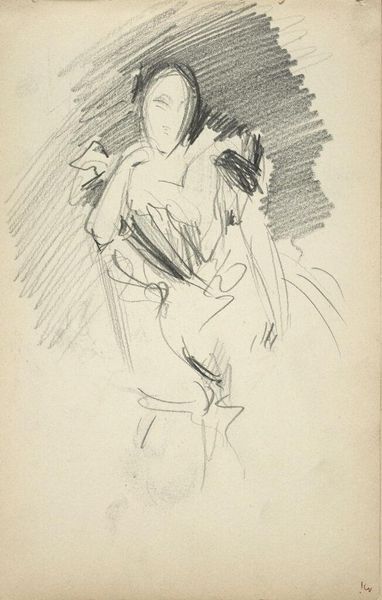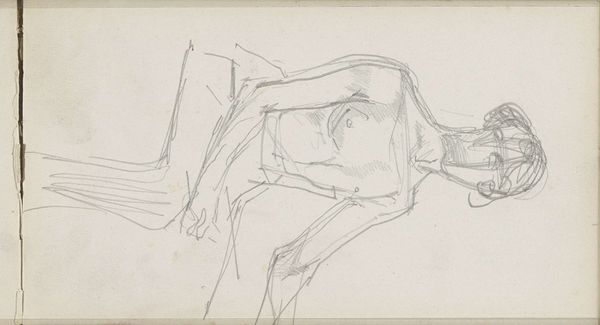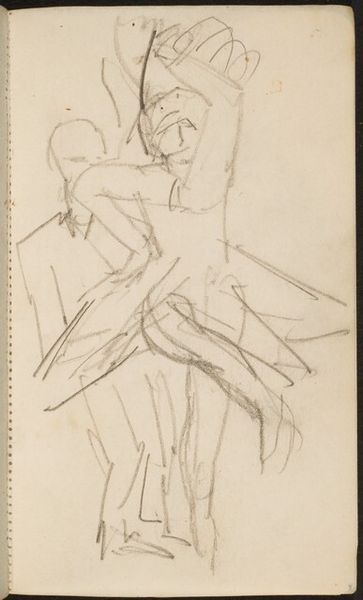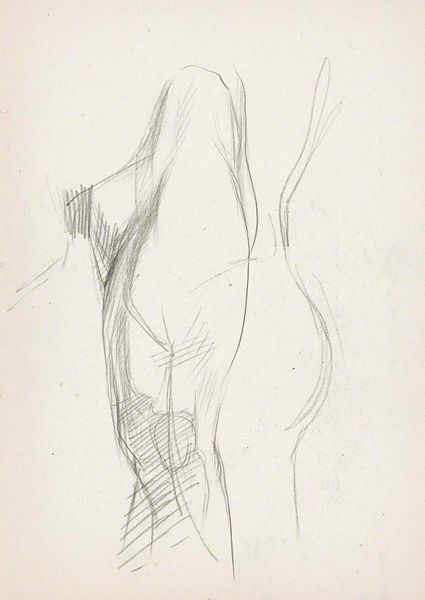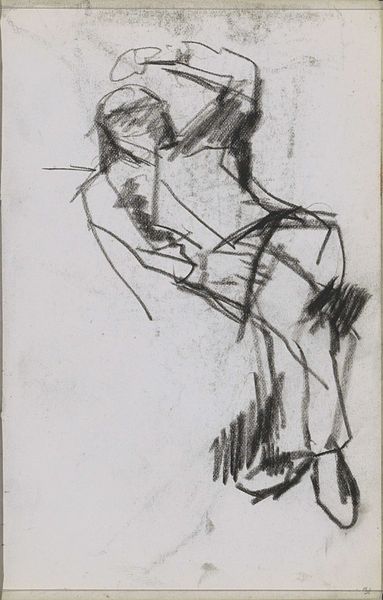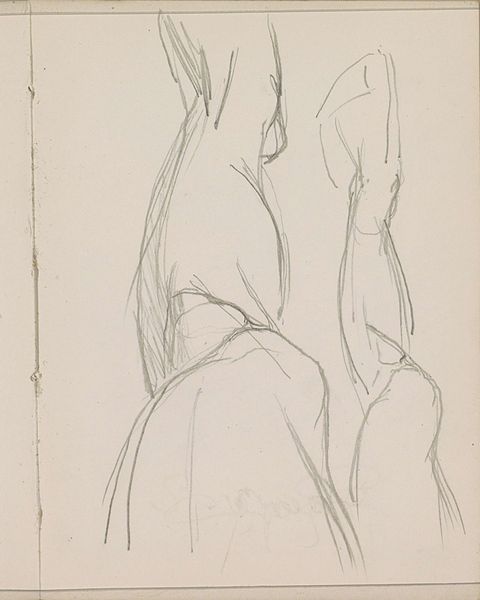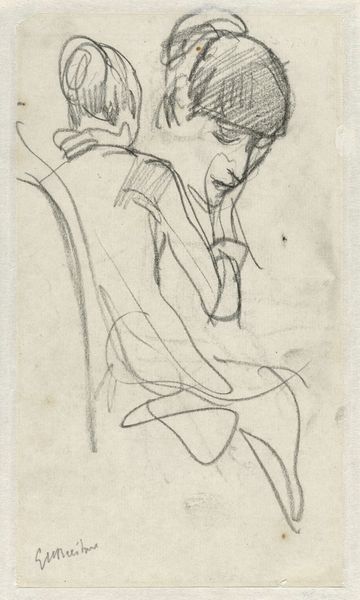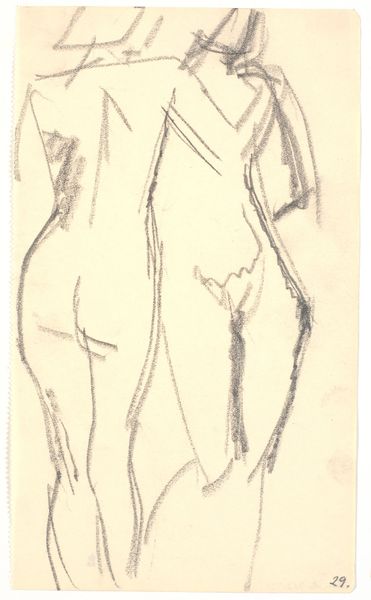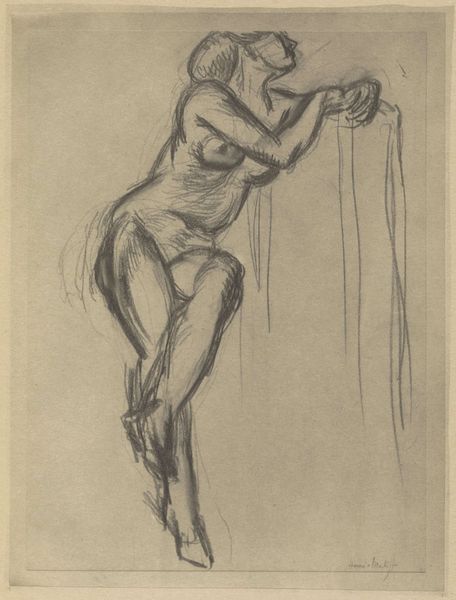
drawing
#
portrait
#
drawing
#
cubism
#
figuration
#
line
Copyright: Public Domain: Artvee
Editor: This is "Dancer in Blue Dress" by Jules Schmalzigaug, it seems to be a drawing. The loose lines and fragmented form create a sense of movement, almost like the dancer is captured mid-twirl. How do you interpret this work, particularly considering its style? Curator: Well, immediately I see a challenge to the traditional representation of the female body. Given the influence of Cubism, it deconstructs the figure, offering a multiplicity of perspectives simultaneously. Considering Schmalzigaug's context, and the avant-garde movements of the early 20th century, how does this portrayal resonate with or diverge from contemporaneous depictions of women? Is it an act of empowerment or does it perhaps perpetuate certain objectifications? Editor: That’s interesting. I hadn’t thought about the potential subversion of the traditional female form. The fragmentation does create a kind of ambiguity. Curator: Exactly. The 'blue dress,' rather than a mere garment, can be seen as a signifier, possibly pointing to socio-political dynamics tied to the figure of the dancer. What happens when we see beyond the literal and think about the performative aspect of gender, the constraints and the freedoms it embodies? How can we apply a feminist lens here? Editor: So, looking at the “Dancer in Blue Dress”, the cubist style, which could be interpreted as objectifying, also offers an opportunity to question societal norms and constraints around the representation of women. It opens up the possibilities of identities, or… of seeing the identities. Curator: Precisely. The art isn't passively reflecting but actively shaping our understanding of these issues. Perhaps its fragmented nature reveals the inherent fragmentation in those very societal roles. And the absence of precise dating – doesn't that contribute to the drawing’s potent and timeless provocation? Editor: It makes the work feel even more relevant today, when conversations around identity are ongoing. Thank you for that insight. Curator: My pleasure. It's through these intersectional analyses that art becomes truly alive, doesn’t it?
Comments
No comments
Be the first to comment and join the conversation on the ultimate creative platform.
